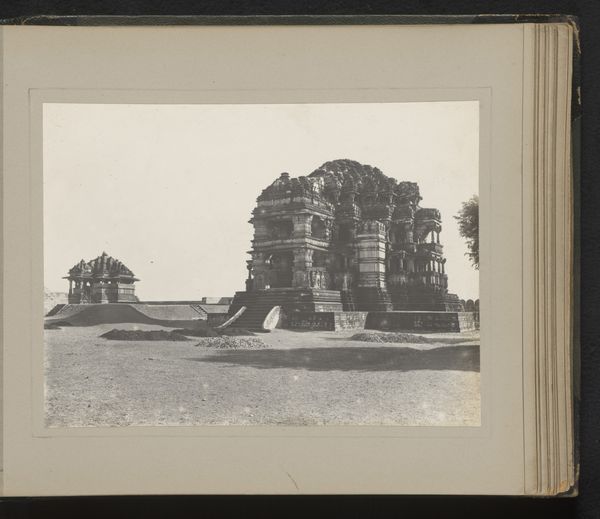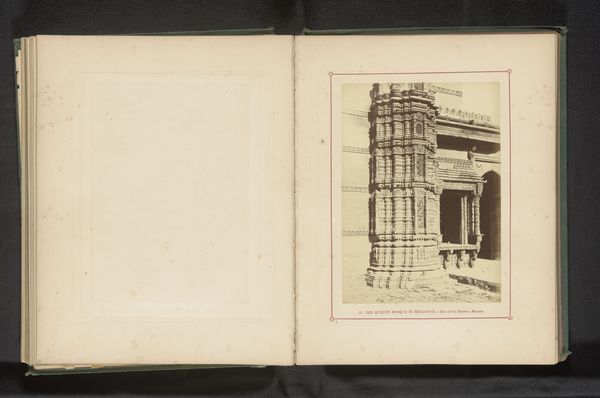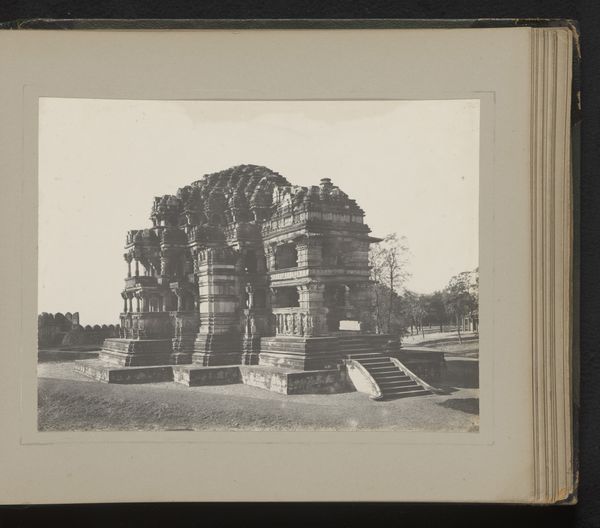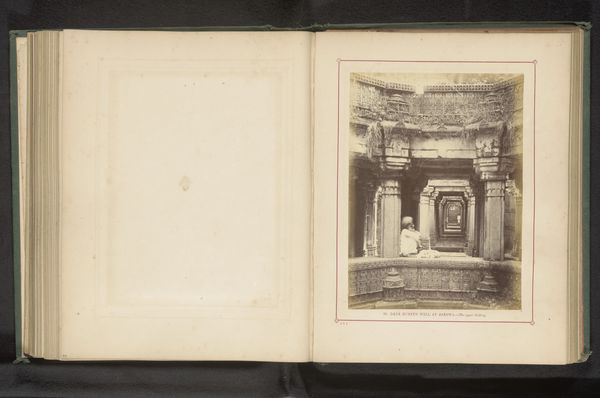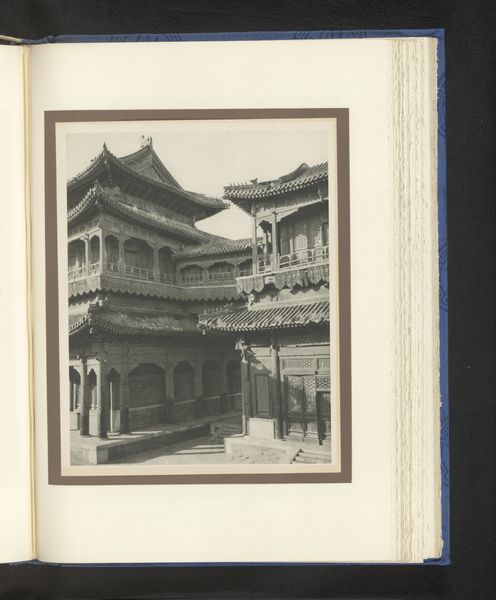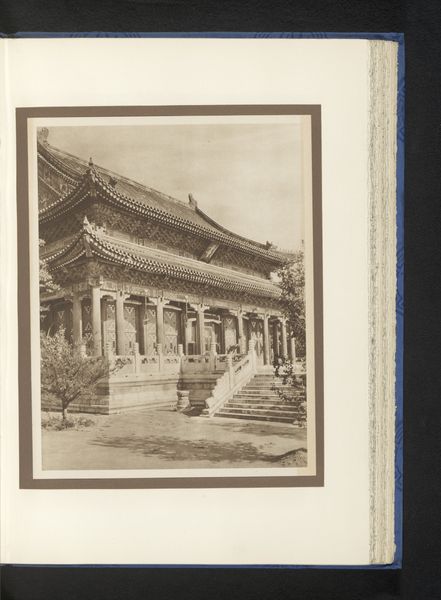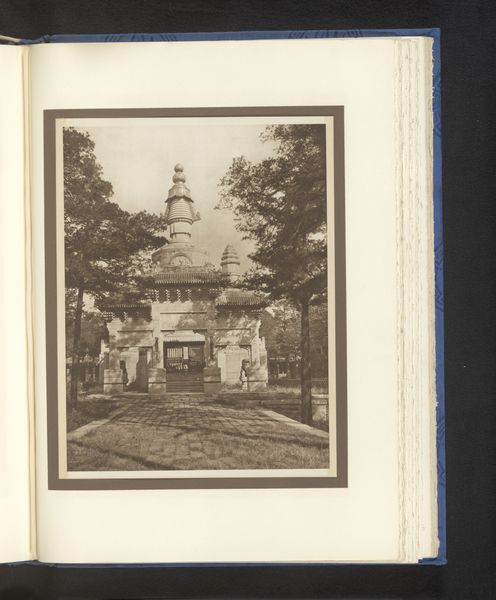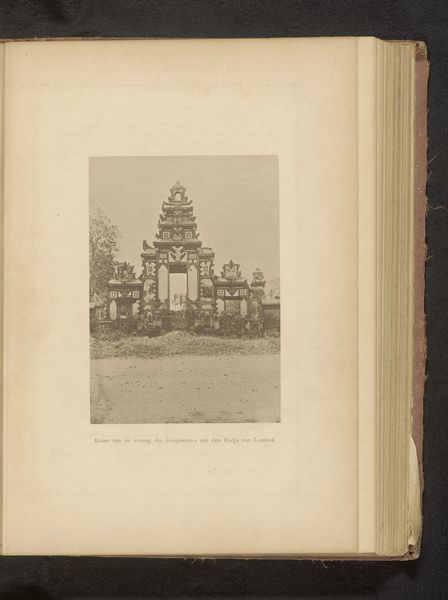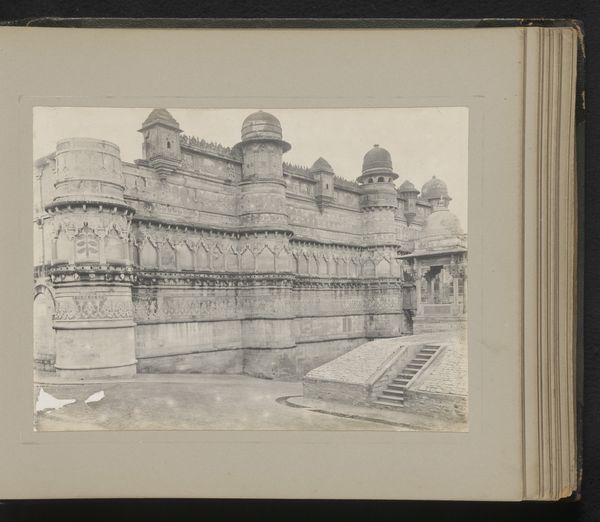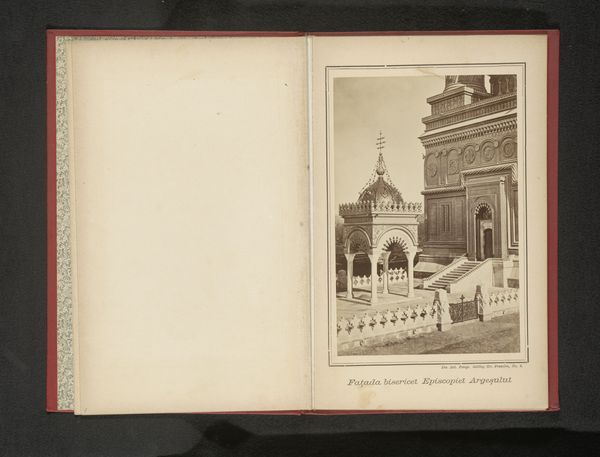
print, photography, albumen-print, architecture
# print
#
asian-art
#
landscape
#
photography
#
albumen-print
#
architecture
Dimensions: height 154 mm, width 206 mm
Copyright: Rijks Museum: Open Domain
Editor: So, this albumen print captures the "Gezicht op de kleine Sasbahu Tempel," a view of the small Sasbahu Temple, sometime around 1900, credited to K.H. Mawal. It’s stark, almost clinical in its depiction of the architecture. What do you see in this piece, beyond the obvious? Curator: I see a powerful document of cultural encounter. Photography, in its early stages in India, became deeply entwined with colonial projects of surveying and cataloging. What we perceive as a straightforward architectural study needs to be interrogated. Whose gaze is structuring this image? Who gets to represent whom and how? Editor: So, it's not just about the temple itself? Curator: Exactly. Consider the temple as a site of resistance and resilience. Mawal, presumably an Indian photographer, may be reclaiming agency through his lens, pushing back against purely orientalist portrayals. Or is this too optimistic a reading? Editor: I see what you mean. The benches almost seem staged, suggesting a specific kind of viewing – one aimed at outside visitors? Curator: Precisely! They’re a Western imposition on this space, guiding how one should perceive it. It transforms a site of worship into a tourist destination, imbued with power dynamics. Editor: I hadn't considered the benches like that. The image is more complex than I initially thought. Curator: These photographs offer multiple layers to unpack when examined through a postcolonial lens, highlighting both the objectification and potential reclamation of cultural heritage. Thinking about visual culture with layers of identity allows the viewer to develop intersectional narratives to consider art on an in-depth basis. Editor: That really changed my perspective. Thank you.
Comments
No comments
Be the first to comment and join the conversation on the ultimate creative platform.
